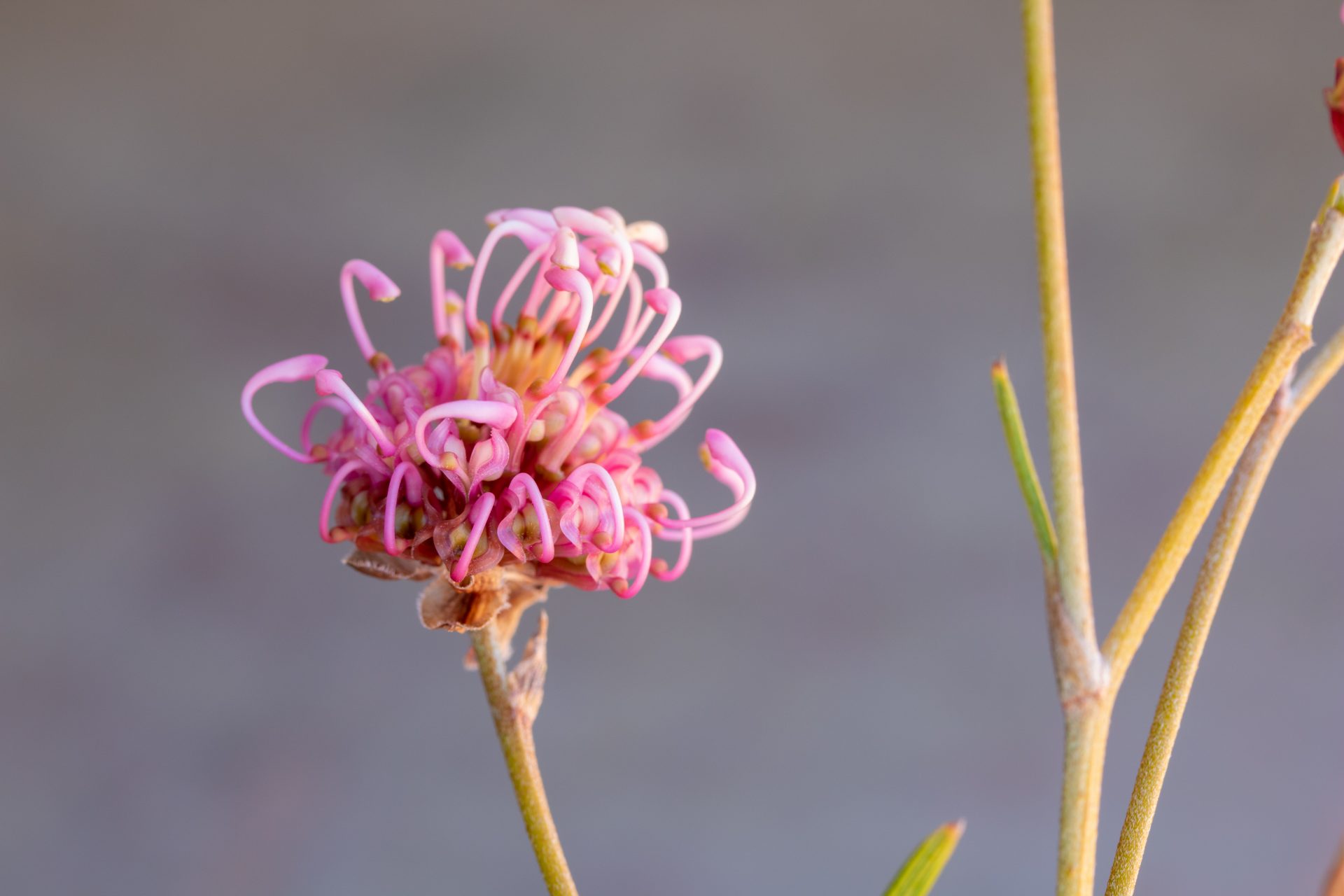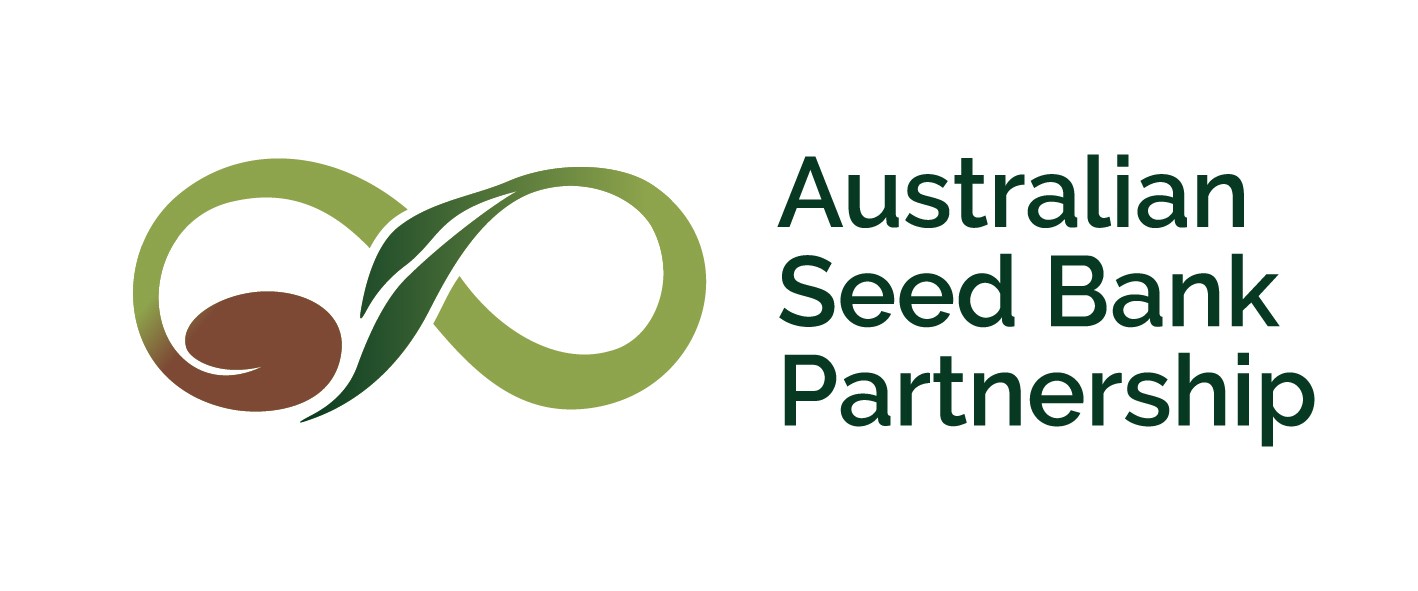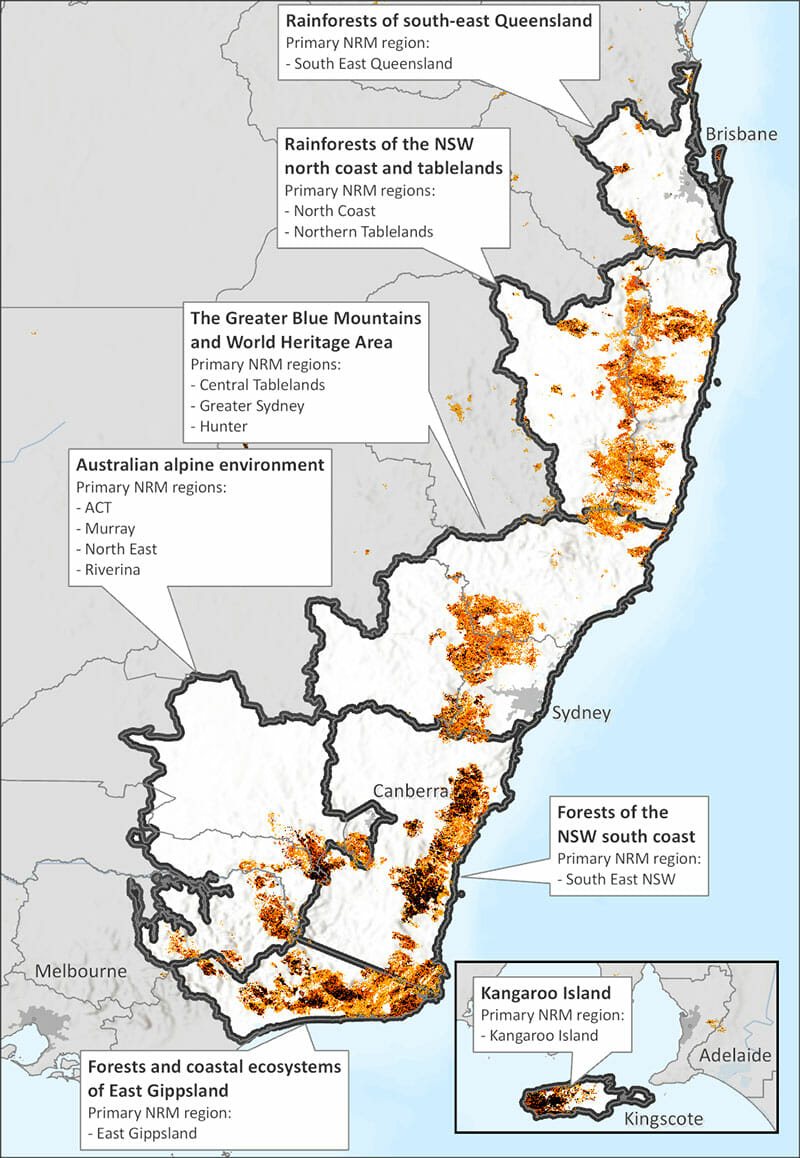Island, Alps, and Forests
A strategic multi-regional approach to bushfire recovery
Project overview
In 2021–22, the Australian Seed Bank Partnership continued bushfire recovery efforts across Australia.
For our Island, Alps and Forest project, the partners worked in seven bushfire affected regions in eastern and south-eastern Australia (see map) to collect and store native plant species in conservation seed banks, as well as completing rapid flora assessments, germination research, and restoration activities.
This work was undertaken in consultation with local communities, First Nations groups, and natural resource managers. Click below to learn more about this project.
Aims
The Island, Alps, and Forest project aimed to support a minimum of 211 plant species across seven regions through seed collections, germination trails, flora assessments and planting activities.
The work focused on native flora prioritised by the Australian Government’s Bushfire Expert Panel as well as regional priorities such as Myrtle Rust affected species, narrow range endemics, fire ephemerals and culturally significant flora.
Some species were targeted across multiple regions to strengthen genetic diversity of stored collections and improve our knowledge of the taxa throughout their range.
The project also aimed to engage First Nations peoples and other community groups to establish relationships and share information to improve long term outcomes for Australia’s biodiversity after the fires.
Outcomes
267
Flora surveys
267 Rapid Flora Assessments completed for 165 species.
Rapid Flora Assessments are surveys of target species and their habitat to determine their phenology, population size, vegetation condition, and the presence of pests and disease.
The data collected allows conservation managers to prioritise future seed collection and bushfire response.
262
Germination trials
262 trials completed for 148 species.
Germination trials produce valuable data about the germination cues and viability of seeds collected under the project.
The results of the scientific research improved the conservation potential for the species stored in seed banks and managed in situ.
305
Seed collections
Seeds collected for 216 species across seven bushfire impacted regions.
These seeds are vitally important, acting as insurance against widespread loss in case of future environmental crises.
2500
Individuals in living collections
2,500 individual plants from 39 species were planted in seed production areas and living collections in Botanic Gardens.
Read more in our Project highlights.
17
Community engagements
Engagements with First Nations people and community groups allowed for knowledge to be shared, relationships to be strengthened, and provided opportunities to learn and be involved in plant conservation work.
Read more in our Project highlights.
27
Myrtle Rust affected species banked
Myrtle Rust is a quickly spreading fungal pathogen affecting our iconic Myrtaceae species.
This project banked collections from Myrtaceae species to provide an insurance against this disease.
Project highlights
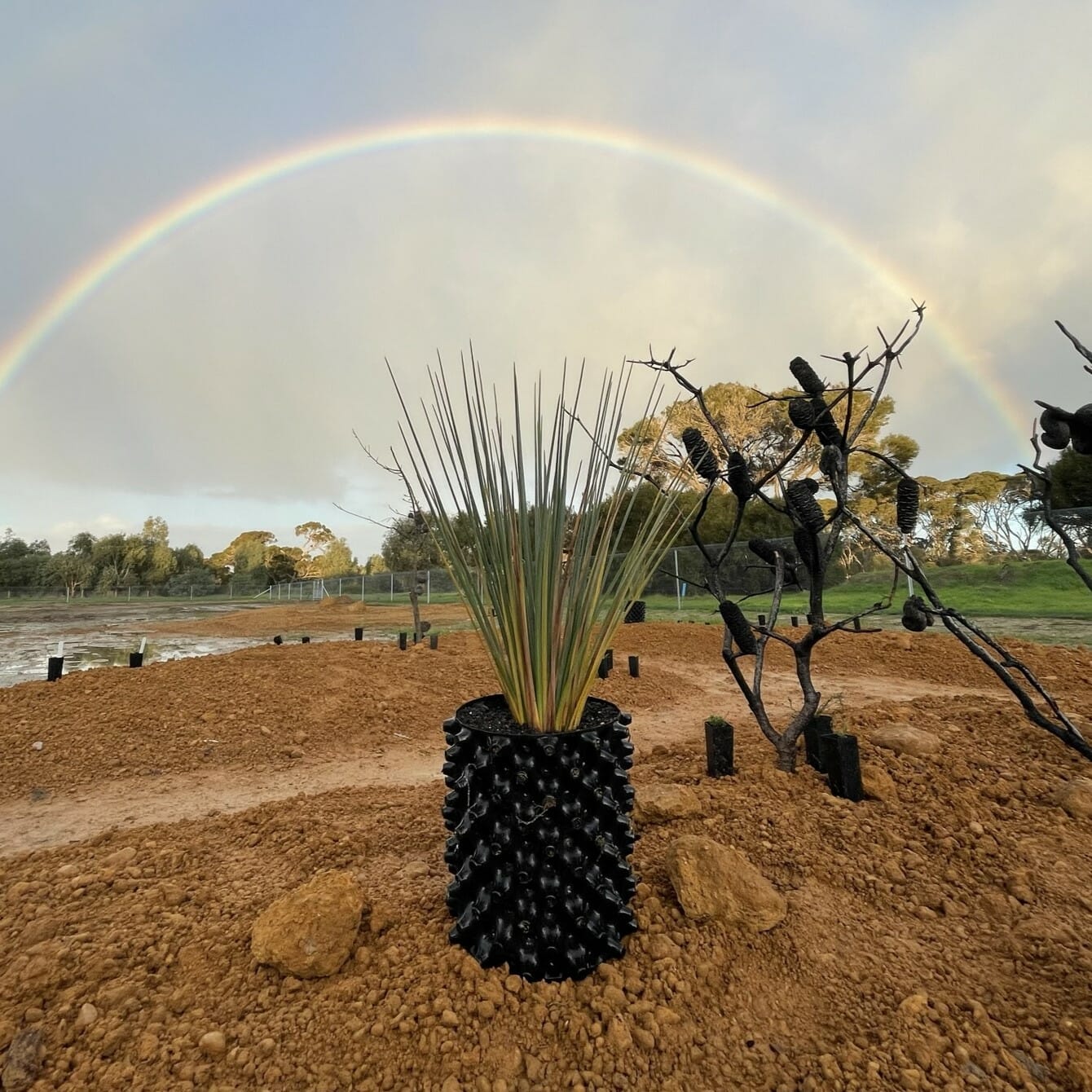
The Rare Seed Garden
South Australian Seed Conservation Centre – Botanic Gardens and State Herbarium of South Australia
This project helped to support the launch of the Kangaroo Island Rare Plant Garden on 9th of July 2022 at the Cygnet Park Sanctuary on Kangaroo Island.
The 500m2 exclosure hosts over 29 of the island’s most at-risk species and will allow future seed collections for banking and biodiversity recovery projects on the island. Over 2000 plants were propagated for the garden by botanists at the Botanic Gardens and State Herbarium of South Australia and planted out by Kangaroo Island community members and project partners.
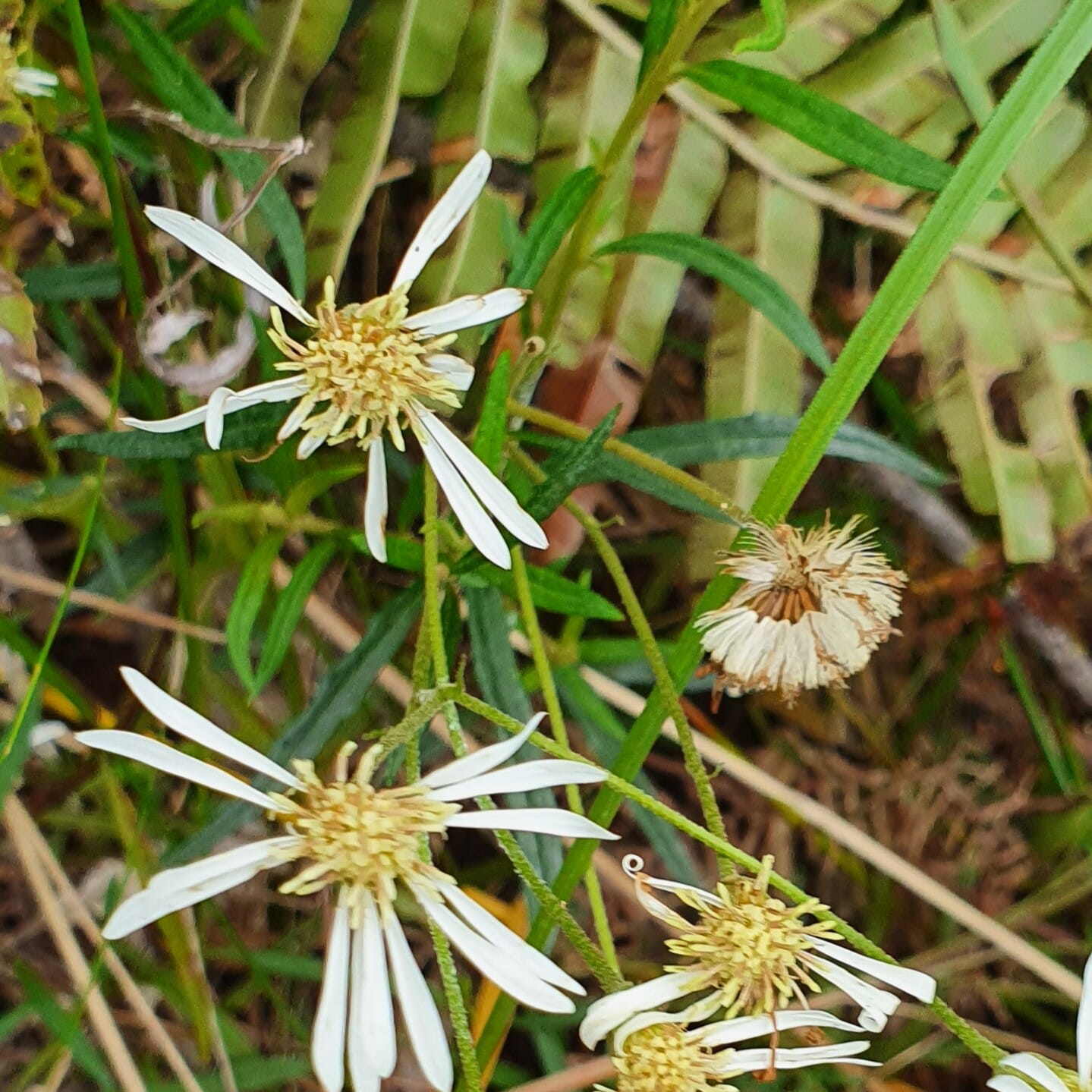
Sharing knowledge leads to a rare find
Queensland Herbarium – Department of Environment and Science, Queensland
Staff from the Queensland Herbarium worked with the Quandamooka Peoples, the Traditional Owners of Minjerribah, on Stradbroke Island. Knowledge of the natural and cultural history of the island was shared, and resulted in the collection of the Island’s only known endemic plant, the endangered swamp daisy (Olearia hygrophila). The seeds were processed and stored at the seed bank at the Brisbane Botanic Gardens.
This work also enabled a successful proposal for the daisy to be listed as Endangered in QLD.
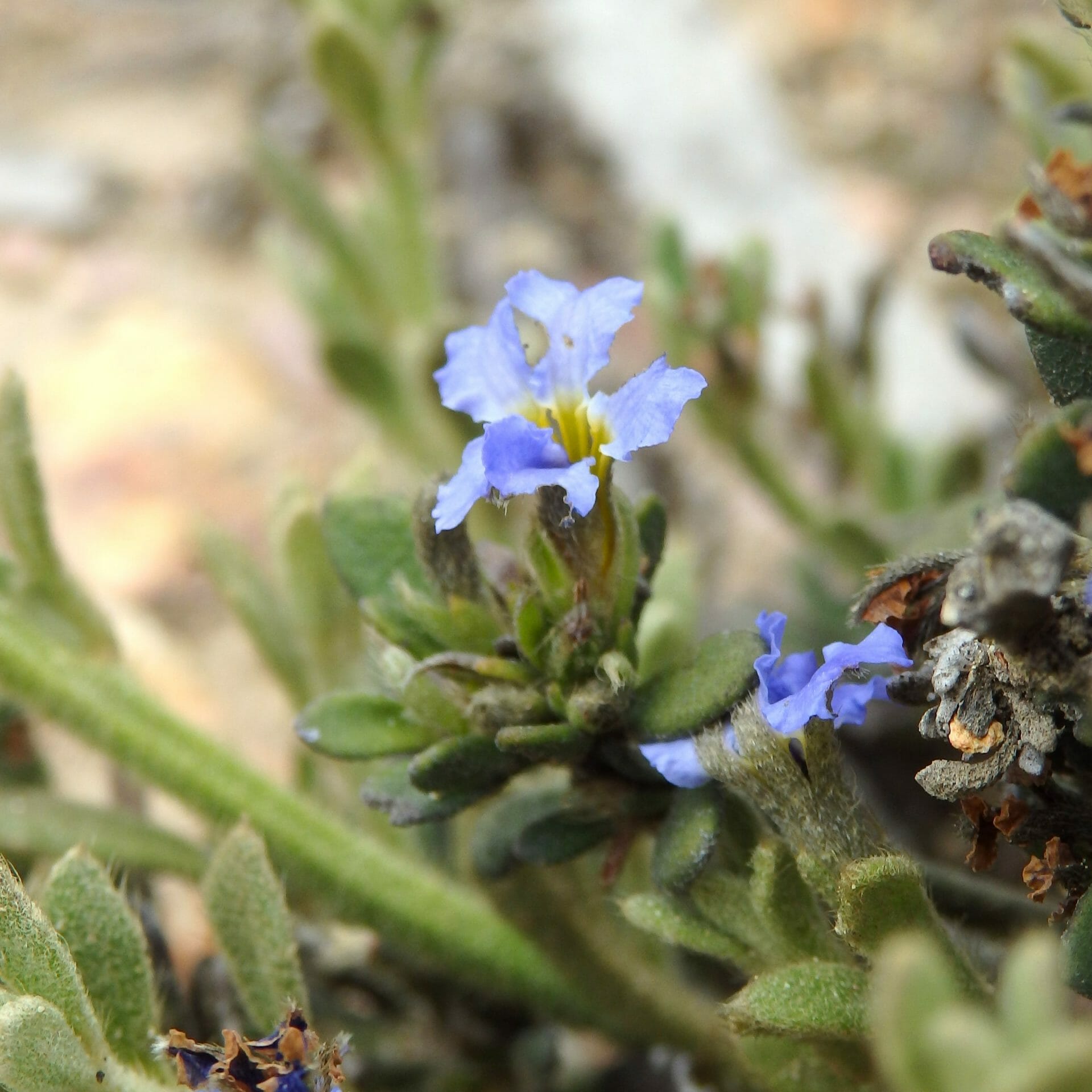
A rediscovery after bushfires
The Victorian Conservation Seedbank – Royal Botanic Gardens, Victoria
In Victoria, the Kyandra Dampiera (Dampiera fusca) was known only from only a few scattered records along a ridgeline on the Nunniong Plateau in Victoria.
In February 2022, a population not seen for almost 40 years was rediscovered by staff of the Victorian Conservation Seedbank. This population had responded impressively to the 2019–20 fires, with well over one million plants estimated to have regenerated. This represents the largest population of this species in Victoria, and vastly increases the number of known individuals for this species.
Unfortunately, most plants are sterile, but some seed was obtained during this trip and is now in storage in the Victorian Conservation Seedbank.
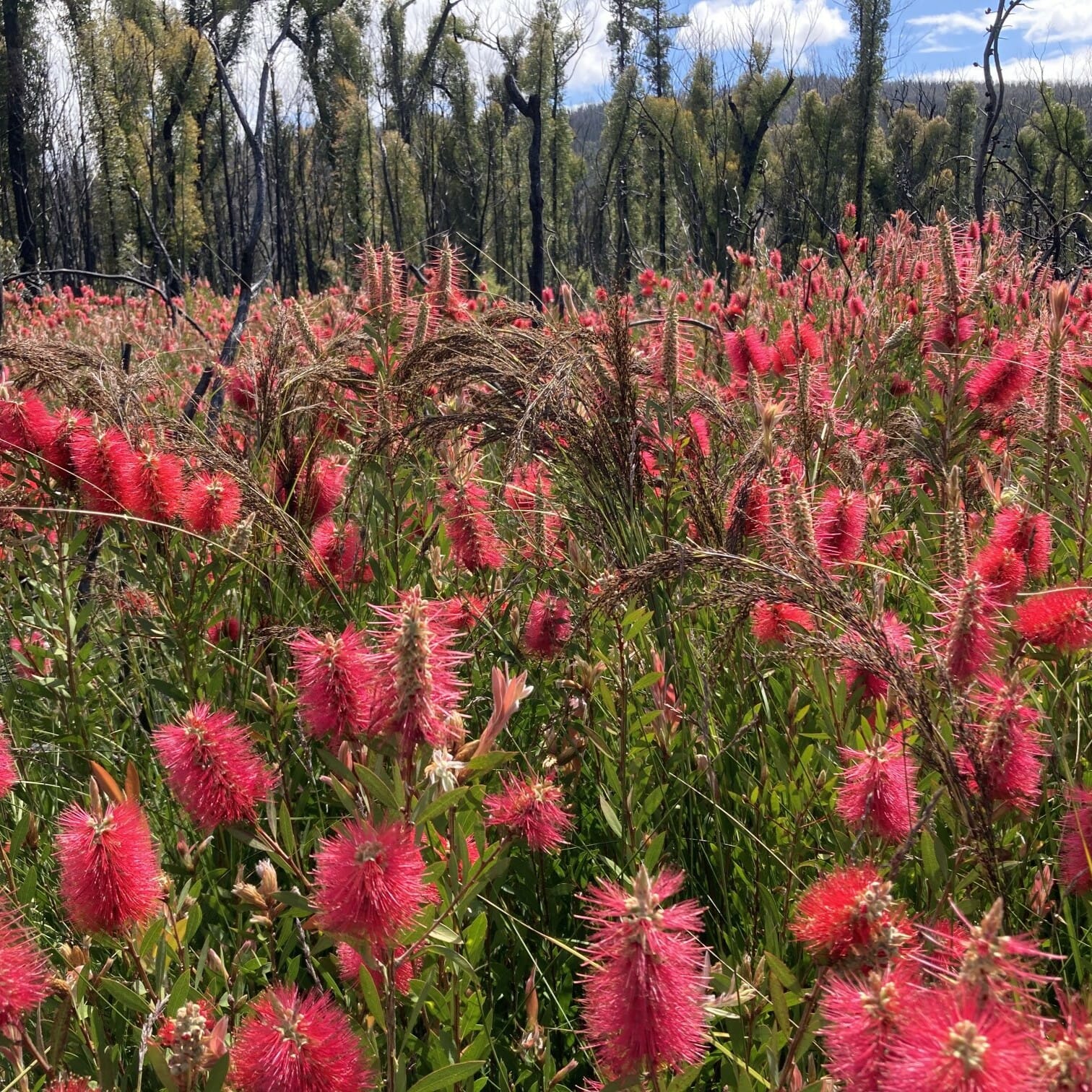
Inspiring hope - regeneration after the fires
The Australian PlantBank – The Australian Botanic Garden, Mt Annan
You grow girl! After a very wet year, our partners have seen some impressive regeneration of understorey species in previously burnt areas.
Staff from The Australian Botanic Garden, Mt Annan witnessed the stunning flowering response of the Crimson Bottlebrush, Callistemon citrinus near Imlay Creek, NSW.
This display demonstrated the incredible resilience of our native flora and ecosystems after the intense disturbance of the 2019-20 bushfires.
Acknowledgements
Thanks to our Partners who were involved in this project
The Australian PlantBank, The Australian Institute of Botanical Science, The Australian Botanic Garden, Mt Annan, The Royal Botanic Gardens and Domain Trust
The Queensland Herbarium, Queensland Government
Brisbane Botanic Gardens Conservation Seed Bank, Brisbane City Council
National Seed Bank, Australian National Botanic Gardens, Australian Capital Territory
South Australian Seed Conservation Centre, Botanic Gardens and State Herbarium, South Australia
The Victorian Conservation Seedbank, Royal Botanic Gardens Victoria
